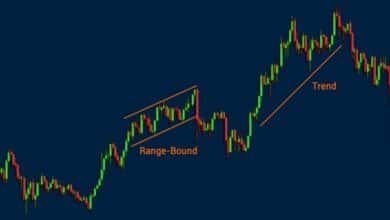V Stock: A Comprehensive Guide

Introduction
When it comes to investing in the stock market, V stock stands out as a popular choice among investors. V stock, representing Visa Inc., is one of the most widely held and traded stocks in the market. Known for its robust financial performance and dominant position in the global payments industry, V stock offers a unique opportunity for both long-term growth and short-term gains. In this section, we’ll delve into what makes V stock an attractive investment and why it has garnered so much attention from investors worldwide.
Visa Inc. operates as a payments technology company, facilitating electronic funds transfers globally. With the increasing shift towards digital payments, V stock has benefited from the growing demand for cashless transactions. This trend has been particularly pronounced in recent years, as more consumers and businesses opt for the convenience and security of electronic payments over traditional cash transactions.
Investors are often drawn to V stock due to Visa’s strong financials and consistent growth. The company’s revenue and earnings have shown steady increases, reflecting its ability to capitalize on the expanding digital payments market. Moreover, Visa’s global presence and extensive network of merchants and financial institutions provide a solid foundation for future growth, making V stock a reliable choice for those looking to invest in the tech-driven financial sector.
Historical Performance of V Stock
To understand the appeal of V stock, it’s essential to look at its historical performance. Since Visa’s initial public offering (IPO) in 2008, V stock has demonstrated impressive growth. The company’s stock price has increased significantly, driven by its expanding market share and strong financial results. Investors who have held V stock over the long term have enjoyed substantial returns, making it a compelling option for those seeking growth stocks.
V stock’s performance is closely tied to Visa’s ability to innovate and adapt to changing market conditions. The company’s commitment to technological advancements in payment processing has kept it ahead of competitors, ensuring its continued relevance in the rapidly evolving financial landscape. As a result, V stock has become a benchmark for success in the payments industry, attracting both individual and institutional investors.
One notable aspect of V stock’s historical performance is its resilience during economic downturns. Despite market volatility and economic uncertainties, Visa has maintained a steady growth trajectory, reflecting the essential nature of its services. This resilience makes V stock an attractive option for risk-averse investors who seek stability in their portfolios.
Analyzing V Stock’s Market Position
Visa’s market position is a crucial factor in the attractiveness of V stock. As a leading player in the global payments industry, Visa holds a significant market share, which translates to substantial revenue generation. V stock benefits from Visa’s dominance in the market, as the company’s extensive network and strong brand recognition create a competitive moat that is difficult for competitors to breach.
Visa’s business model is centered around facilitating electronic payments between consumers, merchants, and financial institutions. This model generates revenue through transaction fees, data processing fees, and other related services. V stock investors benefit from this diversified revenue stream, which provides a steady flow of income and reduces dependence on any single market segment.
Moreover, Visa’s strategic partnerships and acquisitions have strengthened its market position, enhancing the value of V stock. By collaborating with fintech companies and expanding into emerging markets, Visa has positioned itself for long-term growth. These initiatives not only increase the company’s market reach but also provide additional revenue opportunities, further solidifying the appeal of V stock to investors.
Financial Health and Earnings of V Stock
Understanding the financial health of a company is essential for evaluating the potential of its stock. V stock is backed by Visa’s strong financials, which include robust revenue growth, healthy profit margins, and a solid balance sheet. Visa’s consistent earnings growth is a key driver of V stock’s performance, making it an attractive option for growth-oriented investors.
Visa’s financial statements reveal a company that is well-managed and financially stable. The company’s revenue has shown steady increases year over year, driven by the growing volume of electronic payments and the expansion of its global network. This revenue growth translates into higher earnings per share (EPS), which is a positive indicator for V stock investors.
Additionally, Visa’s profitability metrics, such as operating margin and return on equity (ROE), are among the highest in the industry. These metrics reflect the company’s efficient operations and its ability to generate substantial returns on invested capital. For V stock investors, these strong financial indicators suggest a company that is well-positioned to deliver consistent returns over the long term.
V Stock Investment Strategies
Investing in V stock can be approached through various strategies, depending on an investor’s risk tolerance, time horizon, and financial goals. One common strategy is buy-and-hold, where investors purchase V stock with the intention of holding it for an extended period. This approach allows investors to benefit from Visa’s long-term growth prospects and the compounding of returns over time.
Another strategy is to invest in V stock through dollar-cost averaging (DCA). This method involves investing a fixed amount of money into V stock at regular intervals, regardless of the stock price. DCA helps mitigate the impact of market volatility by spreading out the investment over time, reducing the risk of buying at a market peak. For investors with a long-term perspective, DCA can be an effective way to build a position in V stock.
For more active investors, trading V stock based on market trends and technical analysis can be a viable strategy. This approach requires a thorough understanding of market dynamics and the ability to identify entry and exit points. By leveraging market trends and price movements, traders can capitalize on short-term fluctuations in V stock’s price to generate profits.
Risks Associated with V Stock
While V stock offers significant growth potential, it’s important to be aware of the risks associated with investing in it. One primary risk is market volatility, which can impact the stock’s price in the short term. Economic downturns, geopolitical events, and changes in market sentiment can all contribute to fluctuations in V stock’s price, creating uncertainty for investors.
Another risk is regulatory changes. As a global payments company, Visa operates in multiple jurisdictions, each with its own set of regulations. Changes in these regulations, such as new compliance requirements or restrictions on electronic payments, could affect Visa’s operations and, consequently, the performance of V stock. Investors should stay informed about regulatory developments that could impact the payments industry.
Technological advancements also pose a risk to V stock. While Visa is a leader in payments technology, the industry is highly competitive, with new players constantly emerging. Innovations such as blockchain and cryptocurrencies could disrupt traditional payment methods, challenging Visa’s market dominance. Investors in V stock should monitor technological trends and consider how they might impact Visa’s business model.
Comparing V Stock with Competitors
To get a comprehensive view of V stock’s potential, it’s helpful to compare it with its competitors. Major competitors in the payments industry include Mastercard (MA), PayPal (PYPL), and American Express (AXP). Each of these companies has its own strengths and weaknesses, and understanding these can provide insights into V stock’s relative performance.
Mastercard, like Visa, is a global payments technology company with a strong market presence. While both companies have similar business models, Visa’s larger market share gives it a competitive edge. However, Mastercard’s focus on innovation and strategic partnerships makes it a formidable competitor. Comparing V stock with Mastercard stock can help investors assess the relative merits of each investment.
PayPal operates a different business model, focusing on digital wallets and online payments. As e-commerce continues to grow, PayPal has benefited from increased online transactions. However, Visa’s extensive network and established brand provide a level of stability that PayPal lacks. For investors, comparing V stock with PayPal stock highlights the differences between traditional payment networks and newer, digital-first payment solutions.
American Express, known for its premium credit card offerings, targets a different market segment than Visa. While Amex has a loyal customer base, its business model is more susceptible to economic cycles, as it relies heavily on consumer spending. V stock, with its broader market reach and diverse revenue streams, offers a more balanced investment opportunity.
Future Prospects of V Stock
Looking ahead, the future prospects of V stock appear promising. The global shift towards digital payments is expected to continue, providing a strong tailwind for Visa’s growth. As more consumers and businesses embrace cashless transactions, Visa’s transaction volume and revenue are likely to increase, benefiting V stock investors.
Visa’s strategic initiatives, such as expanding into emerging markets and investing in new payment technologies, further enhance its growth potential. Emerging markets represent a significant opportunity for Visa, as the adoption of electronic payments in these regions is still in its early stages. By establishing a strong presence in these markets, Visa can tap into a large and growing customer base, driving future growth for V stock.
Additionally, Visa’s focus on innovation, such as developing new payment solutions and enhancing security features, positions it well to navigate the evolving payments landscape. As technology continues to shape the industry, Visa’s ability to adapt and innovate will be crucial for maintaining its competitive edge. For investors, these initiatives underscore the potential for sustained growth and profitability of V stock.
Environmental, Social, and Governance (ESG) Factors
In recent years, Environmental, Social, and Governance (ESG) factors have become increasingly important for investors. V stock, backed by Visa’s commitment to ESG principles, offers an attractive option for socially responsible investors. Visa’s efforts to promote sustainability, social responsibility, and good governance practices contribute to the overall appeal of V stock.
Visa has implemented various initiatives to reduce its environmental impact, such as improving energy efficiency and investing in renewable energy sources. These efforts not only benefit the environment but also enhance Visa’s reputation as a responsible corporate citizen. For V stock investors, Visa’s focus on sustainability can contribute to long-term value creation.
On the social front, Visa is committed to financial inclusion and supporting underserved communities. Through initiatives like providing access to financial services in developing regions and promoting digital literacy, Visa aims to create positive social impact. These efforts align with the values of many socially conscious investors, making V stock an appealing choice for those looking to invest in companies that prioritize social responsibility.
Governance is another key aspect of Visa’s ESG strategy. The company adheres to high standards of corporate governance, ensuring transparency, accountability, and ethical business practices. Strong governance practices are crucial for maintaining investor confidence and protecting shareholder value. For V stock investors, Visa’s commitment to good governance provides assurance of responsible management and oversight.
Conclusion
In conclusion, V stock represents a compelling investment opportunity for both novice and experienced investors. Visa’s strong market position, robust financials, and consistent growth make it an attractive option for those seeking long-term growth and stability. While there are risks associated with investing in V stock, the company’s ability to innovate and adapt to changing market conditions provides a level of resilience that is reassuring for investors.
By understanding the historical performance, market position, financial health, and future prospects of V stock, investors can make informed decisions about whether to include it in their portfolios. Additionally, considering investment strategies and comparing V stock with competitors can help tailor investment approaches to individual preferences and goals.
Visa’s commitment to ESG principles further enhances the appeal of V stock, offering an investment option that aligns with the values of socially responsible investors. As the payments industry continues to evolve, Visa’s strategic initiatives and focus on innovation position it well for sustained growth, making V stock a worthy consideration for any investment portfolio.
FAQs:
- What factors contribute to the growth potential of V stock?
- V stock benefits from Visa’s strong market position, robust financials, and the growing demand for digital payments. The company’s strategic initiatives and focus on innovation further enhance its growth potential.
- How does V stock compare to its competitors?
- V stock is often compared to competitors like Mastercard, PayPal, and American Express. While each has its strengths, Visa’s larger market share and diverse revenue streams provide a competitive edge.
- What are the risks associated with investing in V stock?
- Risks include market volatility, regulatory changes, and technological advancements that could disrupt traditional payment methods. Staying informed about industry trends and regulatory developments is crucial for managing these risks.
- What investment strategies are suitable for V stock?
- Common strategies include buy-and-hold, dollar-cost averaging, and active trading based on market trends. The choice of strategy depends on an investor’s risk tolerance, time horizon, and financial goals.
- How does Visa’s commitment to ESG factors impact V stock?
- Visa’s focus on sustainability, social responsibility, and good governance practices enhances its reputation and contributes to long-term value creation. These efforts make V stock an attractive option for socially responsible investors.




